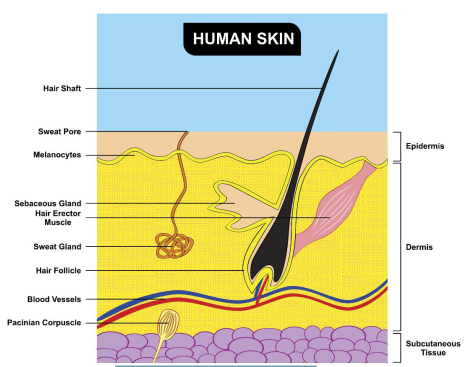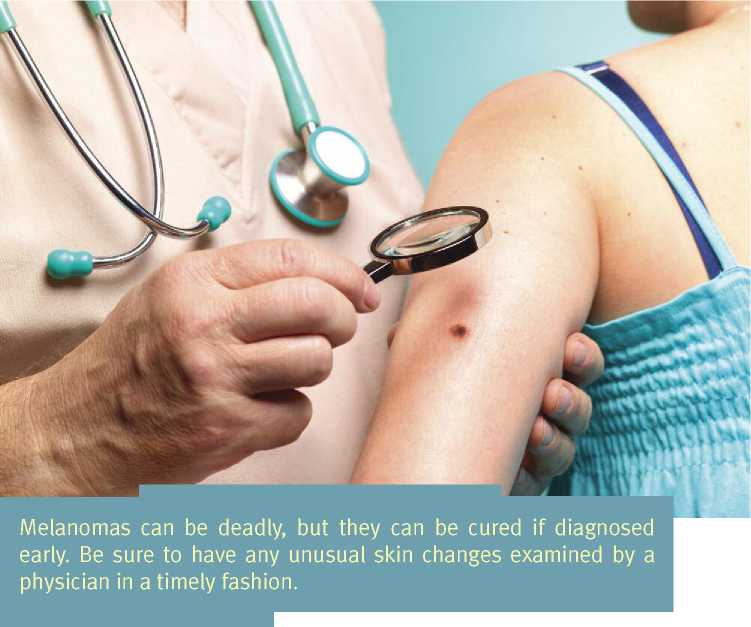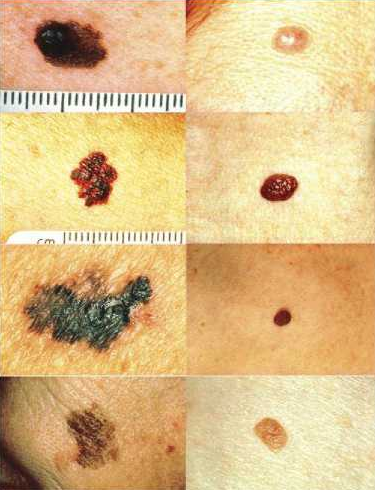For my father, who has shown that having cancer should never stop one from living life to its fullest
Published in 2013 by The Rosen Publishing Group, Inc. 29 East 21st Street, New York, NY 10010
Copyright 2013 by The Rosen Publishing Group, Inc.
First Edition
All rights reserved. No part of this book may be reproduced in any form without permission in writing from the publisher, except by a reviewer.
Library of Congress Cataloging-in-Publication Data
Shea, John M.
Frequently asked questions about skin cancer/John M.
Shea.1st ed.
p. cm.(FAQ: teen life)
Includes bibliographical references and index.
ISBN 978-1-4488-8327-1 (library binding)
1. SkinCancerPopular works. 2. SkinCancer Miscellanea. I. Title.
RC280.S5S53 2013 616.99'477dc23
2012014436
Manufactured in the United States of America
CONTENTS
Chapter 1
WHAT IS SKIN CANCER?
Human skin is truly amazing. As the largest organ, skin covers the body from head to toe. It provides the first line of defense against disease-causing bacteria, toxic chemicals, and extreme temperatures of the outside environment. Nerve endings in the skin allow us to learn about the world around us through our sense of touch. Waterproof skin keeps fluids inside the body. Skin cells have a very active metabolism: new skin cells are constantly being made, while old, dead cells are shed off. Skin cells also produce vitamin D, a nutrient that is vital for strong bones and teeth.
Unfortunately, the skin is at risk for developing cancer, a disease in which a group of cells grows uncontrollably. Growth is necessary for every cell. Under normal circumstances, cells grow in a tightly controlled manner. Chemical signals tell healthy cells when to stop growing. Just as brakes are important for the safety of a car, the signals for cells to stop growing are important for the health of an organ system. Cancerous cells no longer respond to these signals to stop, and therefore they grow out of control.
This group of abnormal cells may become large enough to form a mass, or tumor, which can disrupt the function of healthy cells nearby. Sometimes, cancer cells can metastasize, or spread, and begin growing in other organs. There are many different types of skin cancers (sometimes referred to as skin carcinomas), depending on the type of skin cells from which the cancer first grows. Each type of cancer behaves in a unique way and has a different prognosis (expected outcome or prospect for recovery).
Understanding the anatomy of human skin will help us better understand the different types of skin cancer. It is important to keep in mind that these classifications help us understand how a disease is expected to behave, but not always how it will behave. Each case of cancer is as unique as the person affected by it.
The Anatomy of Skin
Skin is made up of three distinct layers: epidermis, dermis, and subcutaneous tissue. The outermost layer, the epidermis, is about as thick as a sheet of paper. This is the layer that is most exposed to the harsh environments outside the body. The most abundant cells in the epidermis are known as keratinocytes (the suffix "-cyte" means "cell"). These cells make a protein called keratin that helps strengthen and protect the skin. Keratin is also a chief component of fingernails and hair. Another important protein in this layer is melanin, a dark pigment that gives skin its color. Melanin protects skin cells by absorbing dangerous ultraviolet (UV) radiation from sunlight. When skin is exposed to high levels of UV radiation, cells called melanocytes produce more melanin to absorb more UV radiation, making skin tan.
Although thin, the skin is a complex system. Its tissues work together to keep the body healthy and protected from the outside environment.
The next layer, the dermis, is much thicker than the epidermis. In addition to skin cells, the dermis contains hair follicles, sweat glands, nerve endings, and blood vessels. The dermis contains two important proteins: elastin and collagen. Elastin gives skin its flexibility. It is the reason why skin returns to its normal form after it is pinched or pulled. Collagen gives skin its shape and strength. Collagen and elastin tend to break down over time, making the skin sag as people age.
The deepest skin layer is the subcutaneous tissue (sometimes referred to as the hypodermis). This layer is chiefly composed of collagen, fibroblasts (cells that make collagen), and fat cells. The collagen functions to strengthen the skin, while fat cells provide insulation by trapping heat inside the body. In addition, the fat layer acts as a cushion, protecting the inner organs from injuries.
Melanoma
Most skin cancers are classified into two major categories: melanomas and keratinocytic cancers. Melanomas are tumors that arise from melanocytes. These tumors usually appear dark brown or black, although sometimes they may appear flesh-colored or even white. Often, they appear in sun-exposed areas of the body, especially the neck and face, but they can also appear on the soles of the feet, on the palms of the hands, under nail beds, and even in parts of the eye. Among men, melanomas usually appear on the chest or back, while among women they often are found on the legs.
Melanomas may resemble a simple mole, which is a benign, or harmless, concentration of melanocytes in a small area of skin. Unfortunately, unlike moles, melanomas are malignant, meaning that the tumor will continue to grow and spread if not treated. Melanomas may even spread to internal organs. They are the most dangerous form of skin cancer and carry the poorest prognosis if they are unrecognized and untreated.
People who have large or numerous moles on their body are at a higher risk of developing melanomas. It is always prudent to watch moles for worrisome changes. The American Academy of
Pictures in the left column are melanomas with worrisome characteristics, including (from top to bottom) asymmetry, irregular border, nonuniform color, and increasing diameter. In contrast, pictures in the right column are of benign moles.
Dermatology recommends the ABCDE approach to evaluating a suspicious mole:
- A symmetry. Is each half of the mole the mirror image of the other?
- B order. Is the border of the mole smooth?
- C olor. Is the mole the same color throughout?
- D iameter. Is the diameter smaller than a pencil eraser?
- E volving. Does the mole look the same each time it is examined?
Answering "no" to any of these questions should prompt an immediate evaluation by a health care provider.
According to the American Cancer Society (ACS), more than seventy thousand Americans are diagnosed with melanomas every year. While melanomas account for less than 5 percent of all skin cancers, they can be deadly, especially if they are ignored as benign moles. About 75 percent of all skin cancer-related deaths are caused by melanomas, according to the ACS.




















